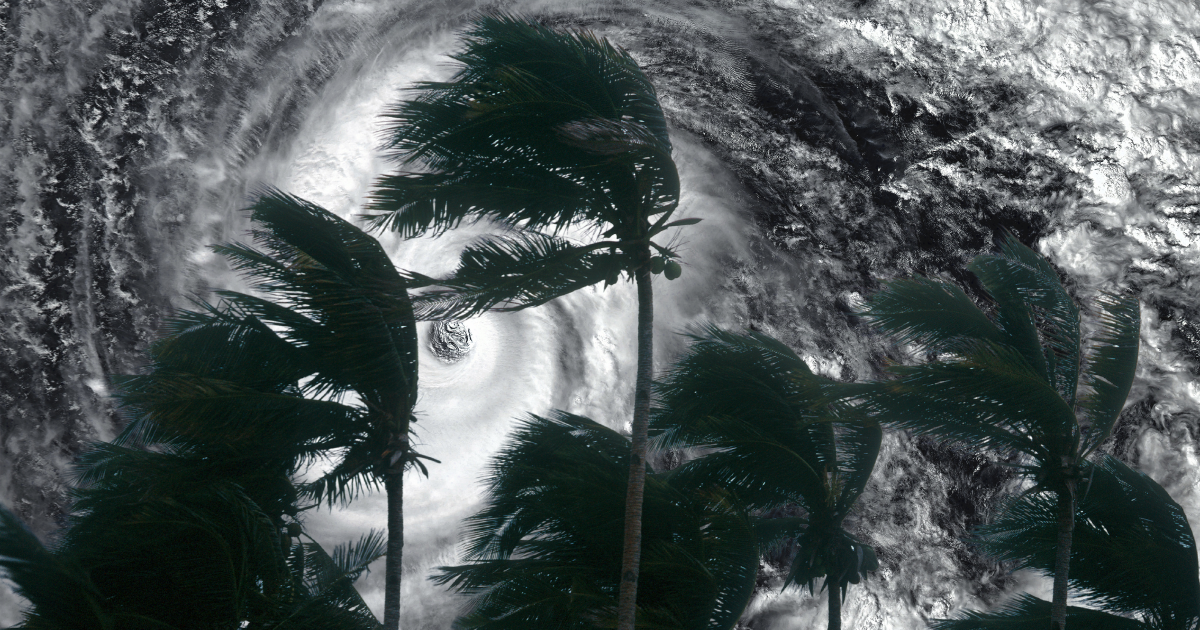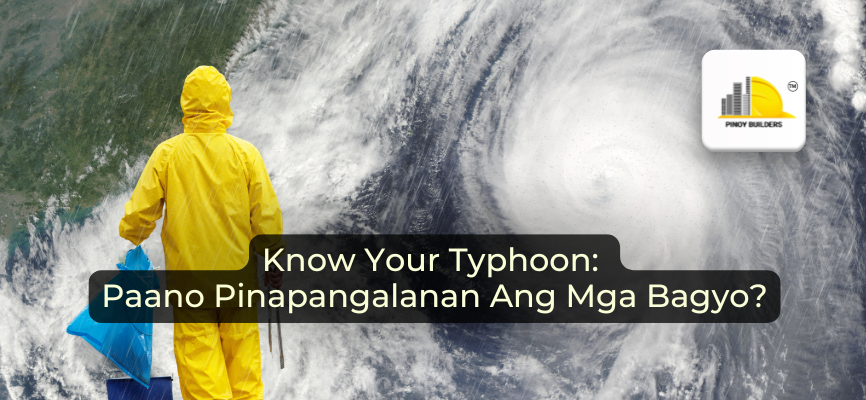Tropical cyclones, or “bagyo,” are a regular and significant part of life in the Philippines, with around 20 typhoons entering the Philippine Area of Responsibility (PAR) every year. Although only less than half of this number usually achieves landfall, such storms still bring strong winds and heavy rains, making it crucial for the country to have an effective system to monitor and address them.
One way to enhance public safety is through the name of typhoons. But this is not just done randomly. In this article, let’s learn about how we get the names of the typhoons that we experience each year. Tara at alamin natin, mga ka-Builders!
Paano nga ba pinapangalanan ang mga bagyo sa Pilipinas?
The Process of Naming Typhoons

The Philippine Atmospheric, Geophysical, and Astronomical Services Administration (PAGASA) is responsible for naming tropical cyclones in the Philippines. They follow a systematic process, with names prepared in advance. Each year, the first cyclone is given a name starting with the letter “A,” and subsequent cyclones receive names in alphabetical order. For example, in 2022, the first tropical cyclone was named Ada, according to the PAGASA website.
PAGASA uses a rotating 4-column naming system. Each column contains a list of 25 names, and these lists rotate every four years. The entire system will rotate again in 2026, reusing names from Column 1, such as Auring. Should the country experience more than 25 cyclones in a year, PAGASA has a reserve list of 10 names, ensuring they are prepared for any scenario.
Where Did We Get These Names?
Typhoon naming in the Philippines started in 1963, but initially, only female names were used. The names followed the alphabetical order, from A to Y, excluding X, and often ended in “ng.” For example, notable typhoons like Ruping in 1990, Rosing in 1995, and Auring in 2013 reflect this tradition.
PAGASA has involved the public in the typhoon naming process. In 1998, they launched the “Name a Bagyo Contest,” inviting the public to submit name suggestions for future typhoons. Many of the names still in use today came from this initiative, allowing Filipinos to have a direct role in naming the storms that affect them.
Criteria for Retiring Typhoon Names
In some cases, a typhoon’s name is retired or decommissioned, never to be used again due to the destruction it caused. PAGASA retires names if a typhoon results in more than 300 casualties or causes over ₱1 billion in damages. Examples of retired names include Ondoy (2009), Yolanda (2013), and Sendong (2011), all of which left lasting impacts on the country.
For 2024, PAGASA has a list of names ready for the upcoming tropical cyclones, starting with Aghon, followed by Butchoy, Carina (the recent super typhoon, international name: Typhoon Gaemi), and Dindo. These names reflect PAGASA’s preparedness in responding to the typhoon season and ensuring that the public is aware of upcoming weather disturbances.
You can check out the names in rotation on PAGASA’s Philippine Tropical Cyclone Names online page.
Know Your Typhoon
The process of naming typhoons in the Philippines is essential for raising awareness and tracking tropical cyclones. PAGASA’s structured naming system guarantees public awareness and preparation for each storm. From rotating name columns to public involvement and the retiring of devastating storm names, this system is a critical component of the country’s disaster preparedness and response strategy.
References
PAGASA. (n.d.). Frequently Asked Questions (FAQ) / Trivia. PAGASA. Retrieved September 5, 2024, from https://www.pagasa.dost.gov.ph/learnings/faqs-and-trivias
Radyo Pilipinas 2 Sports. (n.d.). Paano pinapangalanan ang mga bagyo? Radyo Pilipinas 2 Sports. https://www.facebook.com/RPDos918/posts/paano-pinapangalanan-ang-mga-bagyopaano-nga-ba-pinapangalanan-ng-philippine-atmo/2515221021862054/










